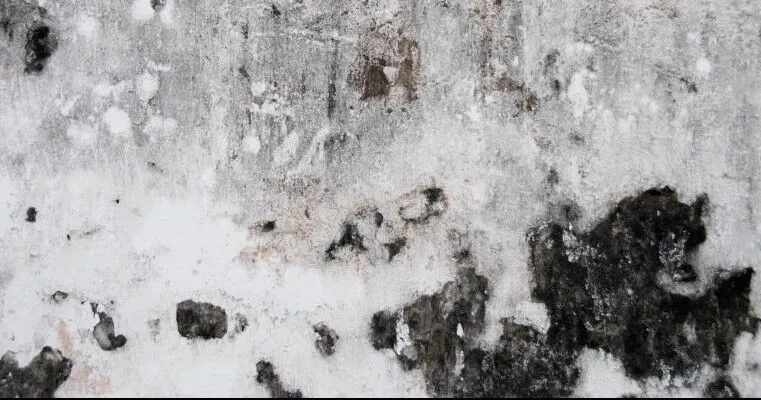Breathe Easy: Dealing with Black Mold in Your House

Black mold is a common term for toxigenic mold that is black in appearance. It is a type of fungus that can be found in many places but is most commonly found in areas with high levels of moisture, poor ventilation, and a temperature range between 77 and 86 degrees Fahrenheit. It is important to be aware of the conditions that can lead to black mold growth, as it can cause serious health problems if left unchecked. Moisture is the most important factor in the growth of black mold, as it needs a damp environment to thrive. Poor ventilation can also contribute to the growth of black mold, as it can trap moisture in the air and create a hospitable environment for the fungus.
COMMON PLACES WHERE BLACK MOLD CAN GROW
Black mold is a type of fungus that can be found in many places, both indoors and outdoors. It thrives in damp, dark, and warm environments, making it a common problem in many homes. One of the most common places to find black mold is in the bathroom. The combination of trapped moisture and inner wall framing can create the perfect environment for it to grow.
Another common place to find black mold is in air conditioning systems. Poor ventilation and condensation can create the perfect environment for black mold to grow, and it can spread quickly throughout the system. It is important to regularly check and clean air conditioning systems to prevent the growth of black mold.
Black mold can also be found in crawl spaces. These areas are often damp and dark, and can be difficult to ventilate properly. If you suspect that black mold is growing in your crawl space, it is important to take action quickly to prevent it from spreading into the home.
HEALTH RISKS ASSOCIATED WITH BLACK MOLD
The CDC states that most molds will not harm most people, and most people are not harmed by most molds; however, some people can be affected by any mold and some molds can affect anyone. Those molds that can affect anyone are the toxigenic black molds. Unfortunately, black mold can cause serious health risks to those exposed to it. The toxic spores released by black mold can cause respiratory issues, such as coughing, sneezing, and difficulty breathing. In extreme cases, black mold can even lead to long-term health problems such as asthma, other respiratory illnesses and/or nervous system damage.
SIGNS OF BLACK MOLD INFESTATION
Black mold in the home is a serious concern that can lead to a variety of health problems.
The most common signs of black mold include a musty or earthy/musty odor, which is often the first indication of a problem.
Additionally, you may notice dark green or black spots on walls, ceilings, or in corners, particularly in damp areas like bathrooms, utility room or the kitchen.
Physical symptoms such as coughing, sneezing, skin irritation, and even more severe reactions like chronic fatigue or persistent headaches could also be signs of black mold exposure.
Persistent condensation on windows, peeling wallpaper, and discoloration of walls can also indicate a moisture problem, which is conducive to mold growth.
If you notice any of these signs, it’s important to address the problem immediately, as prolonged exposure can have serious health implications.
HOW TO TEST FOR BLACK MOLD
Testing for black mold is an important step in ensuring the air quality in your home is safe. To test for black mold, you should first inspect the high moisture level areas in your home, such as bathrooms, basements, and attics. If you notice any discoloration, dark spots, or musty odors, you should take samples of the air and affected areas and send them to a lab for testing. By testing for black mold, you can ensure the air quality in your home is safe and free from any potential health risks. These types of tests are performed by a State Licensed Mold Assessor or Industrial Hygienist. Never allow a mold remediation contractor to perform the testing. It is a conflict of interest and against the law.
PREVENTING BLACK MOLD GROWTH
To prevent black mold growth, it is important to keep these areas dry and well-ventilated. Make sure to check for any signs of water damage, such as discoloration or peeling paint, and repair any leaks or water damage as soon as possible. Additionally, you can use a dehumidifier to reduce the humidity in your home. Regularly cleaning and disinfecting high-risk areas can also help to prevent the growth of black mold.
REMOVING BLACK MOLD SAFELY
To remove black mold safely, it is important to use the right cleaning products. However, it’s crucial to remember that black mold can pose serious health risks, including respiratory issues and allergic reactions. That’s why hiring professionals to remove black mold is highly recommended. Experts are equipped with the right tools, protective equipment, and knowledge to safely and thoroughly eliminate mold, ensuring your home is safe and healthy. They can also help identify the source of the mold to prevent future growth.
Therefore, while DIY methods may seem tempting, the safe and effective removal of black mold should always be left to the professionals.
If you suspect that you have a black mold problem, it is important to contact mold removal experts to assess the situation and take the necessary steps to remove it safely in order to protect your health and the health of your family.
